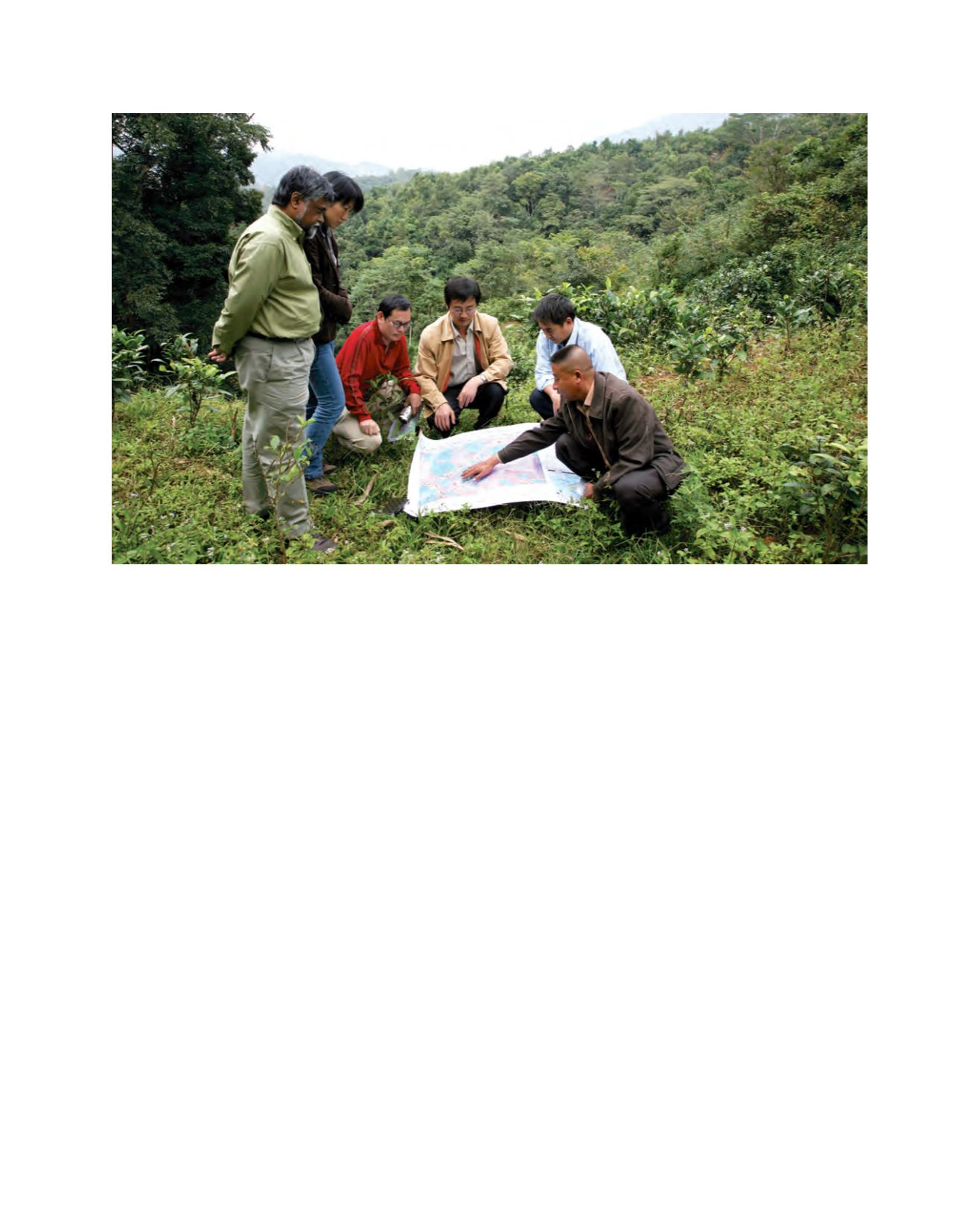

[
] 246
five components: (i) poverty reduction; (ii) integrated
land-use planning and management; (iii) restored
ecosystem connectivity; (iv) capacity-building; and (v)
sustainable financing.
Over 1.2 million hectares have been delineated as BCI
corridors with improved security of land tenure in over
31,000 hectares of Community Protected Areas (CPA),
established 500 hectares of co-managed forests, and
reforestation of over 3,700 hectares. More than 28,000
households directly benefited in 164 villages/communes
in Cambodia, Lao PDR and Viet Nam. A new survey
shows the greatest changes are in increased awareness
for forest protection (81 per cent), improved skills in
forest protection and management (69 per cent), as well
as in women’s enhanced decision-making (63 per cent)
and participation (59 per cent). Among the benefits
most appreciated were the provision of help establish-
ing agroforestry systems in Lao PDR and Viet Nam,
support for land tenure improvements in Cambodia and
improved local livelihoods with reduced forest depend-
ence in pilot sectors.
BCI has also provided a venue for collaboration
and partnerships between government and NGOs.
Governments worked on policy and regulatory frame-
works, while NGOs working on micro-level service
delivery. Though this entailed high initial costs for
coordination and administration, the benefits from rela-
tionships fostered between state and non-state actors
have generated positive implications well beyond the
project period and scope. Local government ownership
small-scale agriculture, illegal and unsustainable logging and
non-timber forest products extraction, plus weak governance and
environmental awareness.
A substantial portion of the population still lives below the poverty
line, and socio-economic disparities are widening further. Poverty
incidence among marginalized ethnic groups remains the highest.
Part of this impoverishment is the loss of forest ecosystem services
and a regional approach is very much needed to address ecosys-
tem fragmentation. If neighbouring countries establish corridors to
link protected areas, this can maintain and strengthen ecosystem
services including watershed protection, biodiversity conservation
and carbon sequestration while promoting and enhancing human
well-being.
The GMS Biodiversity Conservation Corridors Initiative
The Biodiversity Conservation Corridors Initiative (BCI) is a flag-
ship effort led by the Asian Development Bank (ADB) established
as part of the GMS Strategic Framework 2002-2012. BCI works
to prevent forest ecosystem fragmentation and is contributing to
the achievement of the four global objectives of UNFF: (i) revers-
ing forest cover loss through sustainable forest management;
(ii) enhancing forest-based economic, social and environmental
benefits, particularly through improving the livelihoods of forest-
dependent people; (iii) increasing the area of sustainably managed
forests, particularly protected forests; and (iv) mobilizing new and
additional financial resources.
During the pilot phase (2006-2011), BCI focused on eight sites
in Cambodia, Lao PDR, Viet Nam, PRC, and Thailand to integrate
poverty reduction in forest biodiversity conservation practices
through an integrative, multi-sectoral programme approach. BCI has
BCI works to prevent forest ecosystem fragmentation
Image: S. Griffiths
















